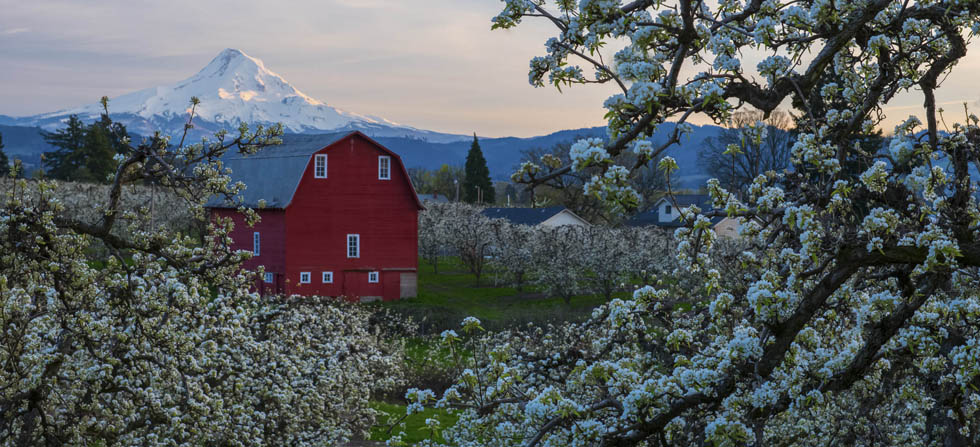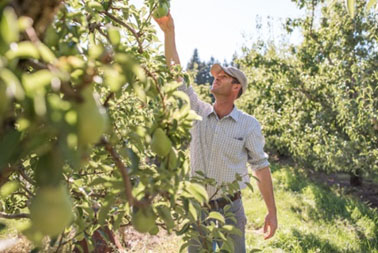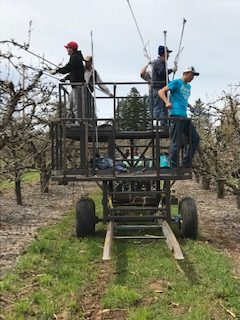
Protecting Farm Land
The Hood River Valley. Beautiful? Productive? Sustainable? Check, check and check. Fed by the glaciers of Mt. Hood the rolling and verdant landscape of our valley is like no other.
Small in size but mighty in output, the Hood River Valley is one of the last agricultural communities in the nation comprised of  family-owned farms rather than corporate ag. This irreplaceable irrigated farmland has some of the best and deepest soils in the world, ideal for no-till, perennial crop farming like orchards, vineyards and berries. Hood River has about 350 commercial farms totaling over 16,000 acres (12,000 acres of pears, 1,500 acres of apples, 1,500 acres cherries and a couple hundred acres of wine grapes, blueberries and other crops).
family-owned farms rather than corporate ag. This irreplaceable irrigated farmland has some of the best and deepest soils in the world, ideal for no-till, perennial crop farming like orchards, vineyards and berries. Hood River has about 350 commercial farms totaling over 16,000 acres (12,000 acres of pears, 1,500 acres of apples, 1,500 acres cherries and a couple hundred acres of wine grapes, blueberries and other crops).
Hood River has the highest average gross dollar return per acre and the highest average tonnage per acre of any county in Oregon. It produces over 50% of the nation’s winter pears (Anjou, Bosc, Comice) and half of the apples grown in the state of Oregon.
 The drive to protect valuable farmland was one of the primary spurs for passing Senate Bill 100, the legislation initiating Oregon’s unique statewide system of land use regulation in 1973. Since then, Oregon has protected its agricultural economy and farmland base through a combined strategy of tax incentives and development restrictions. Farmlands are zoned for “Exclusive Farm Use” substantially limiting their development potential for non-farm uses and in return property owners are compensated with generous tax incentives in return for such restrictions. This statewide approach sets Oregon apart from its western neighbors and has yielded real results. While Oregon is still losing farmland to suburban sprawl, it has been able to slow this erosion of its agricultural land base to a much greater extent than other states.
The drive to protect valuable farmland was one of the primary spurs for passing Senate Bill 100, the legislation initiating Oregon’s unique statewide system of land use regulation in 1973. Since then, Oregon has protected its agricultural economy and farmland base through a combined strategy of tax incentives and development restrictions. Farmlands are zoned for “Exclusive Farm Use” substantially limiting their development potential for non-farm uses and in return property owners are compensated with generous tax incentives in return for such restrictions. This statewide approach sets Oregon apart from its western neighbors and has yielded real results. While Oregon is still losing farmland to suburban sprawl, it has been able to slow this erosion of its agricultural land base to a much greater extent than other states.
The passing of Senate Bill 100 gave working lands a fighting chance of survival, but not without constant monitoring. Protecting farm land for farming has been core to our mission since our founding.
